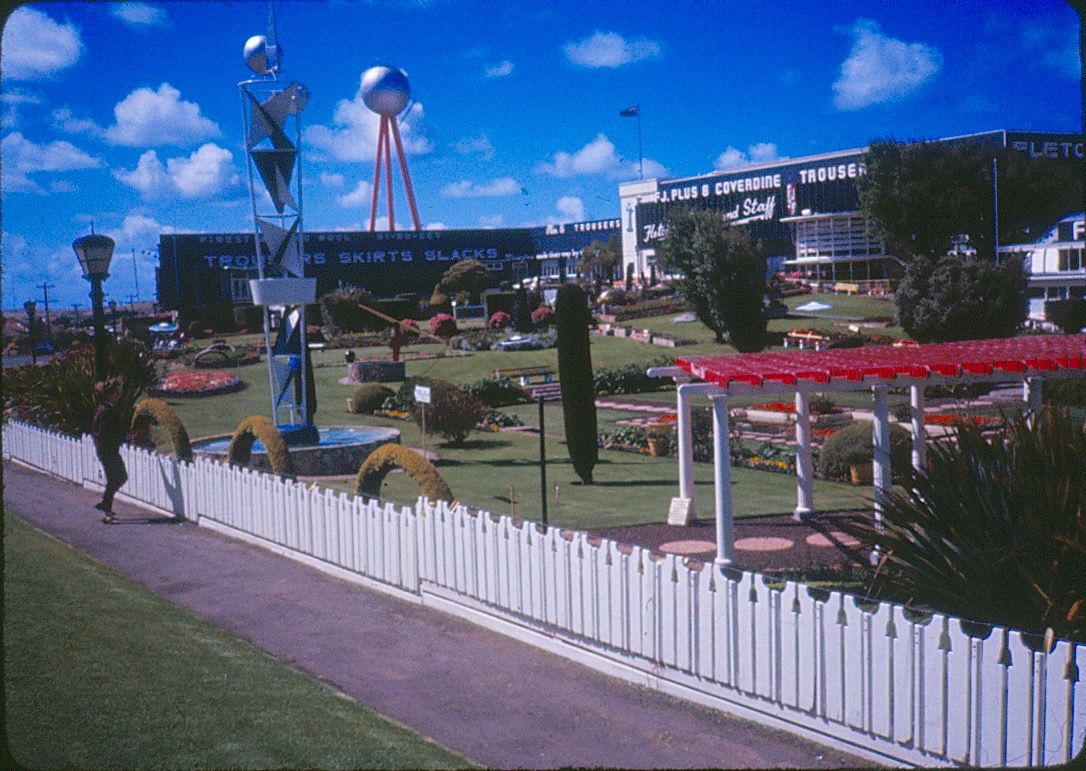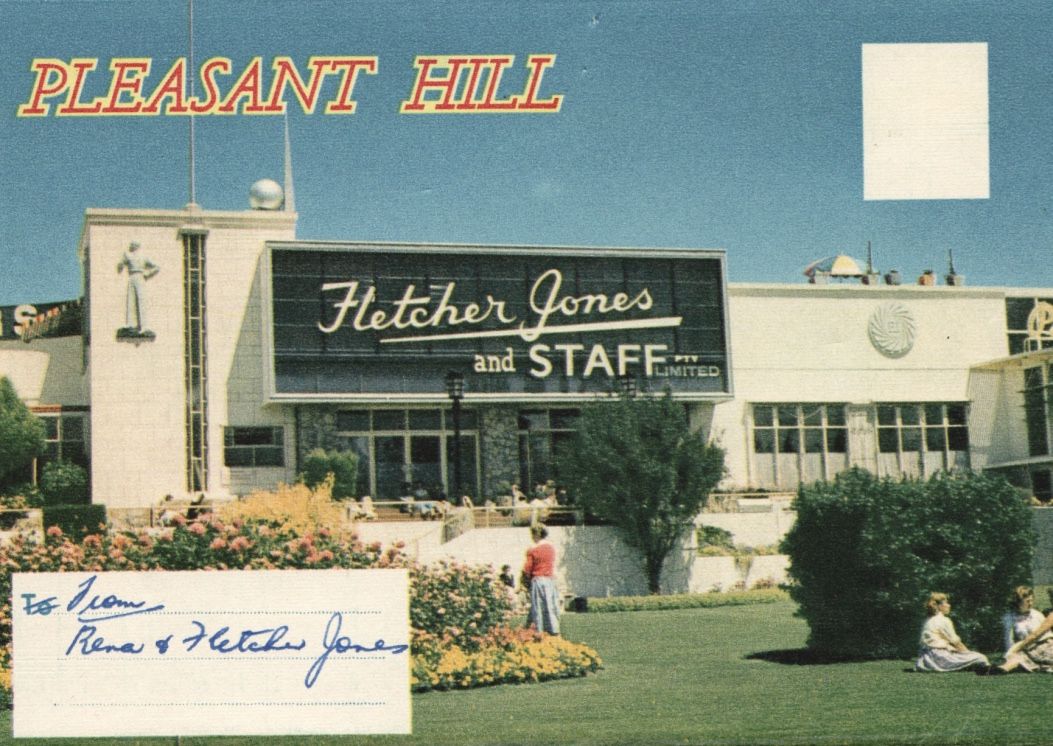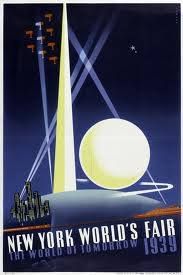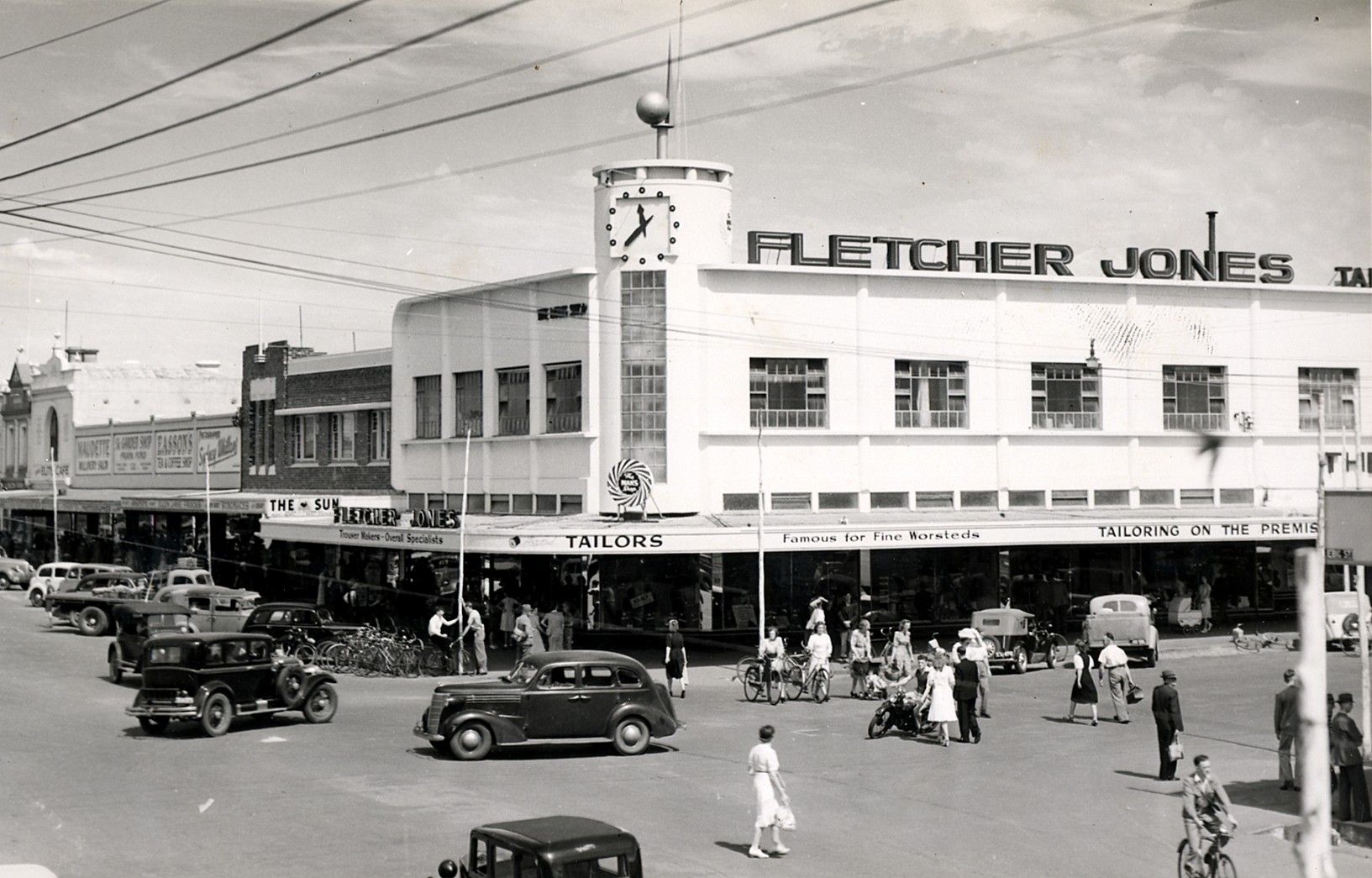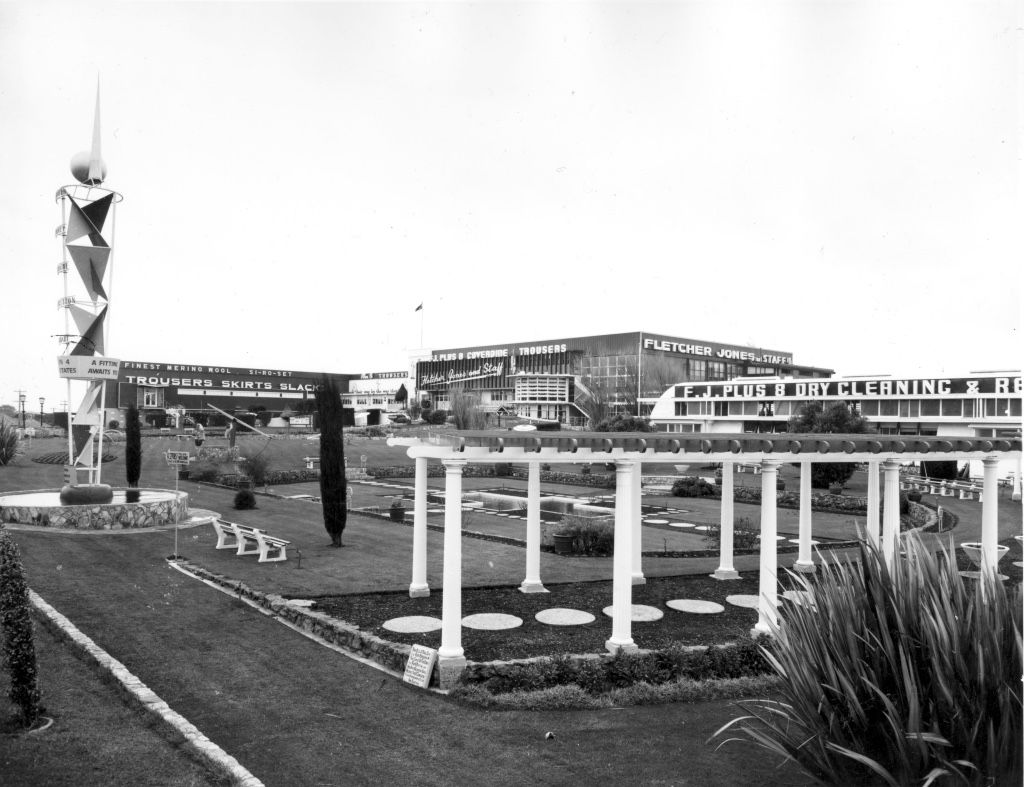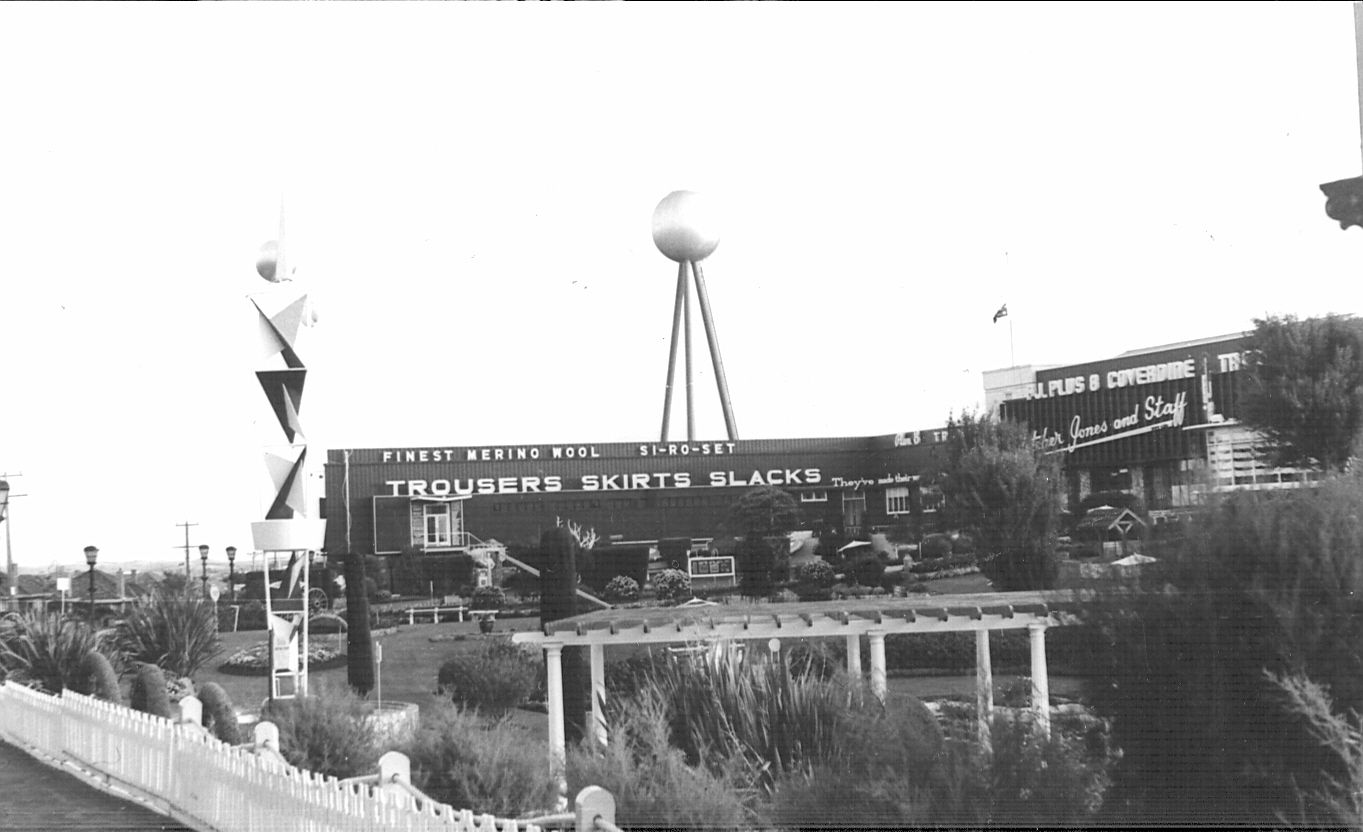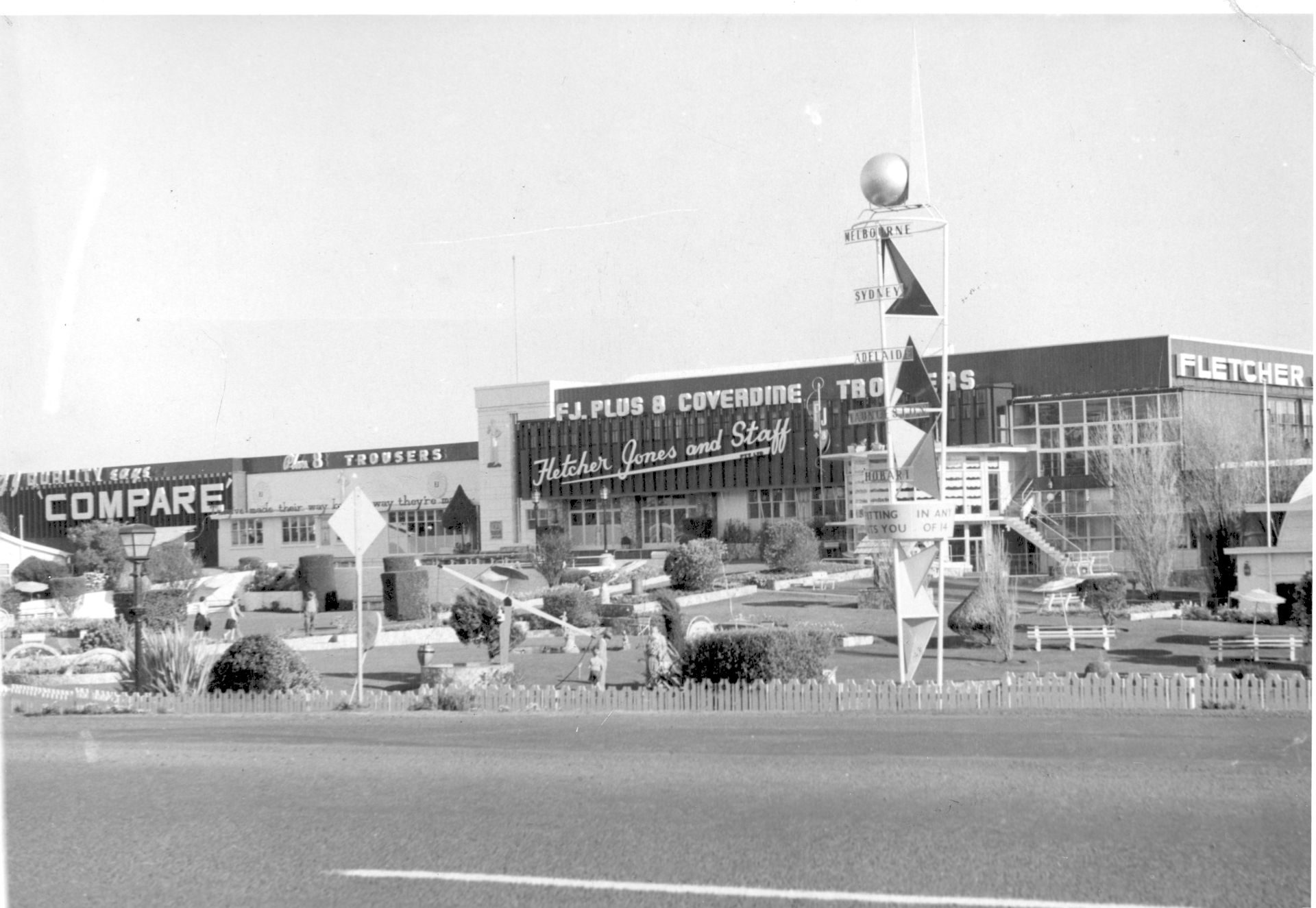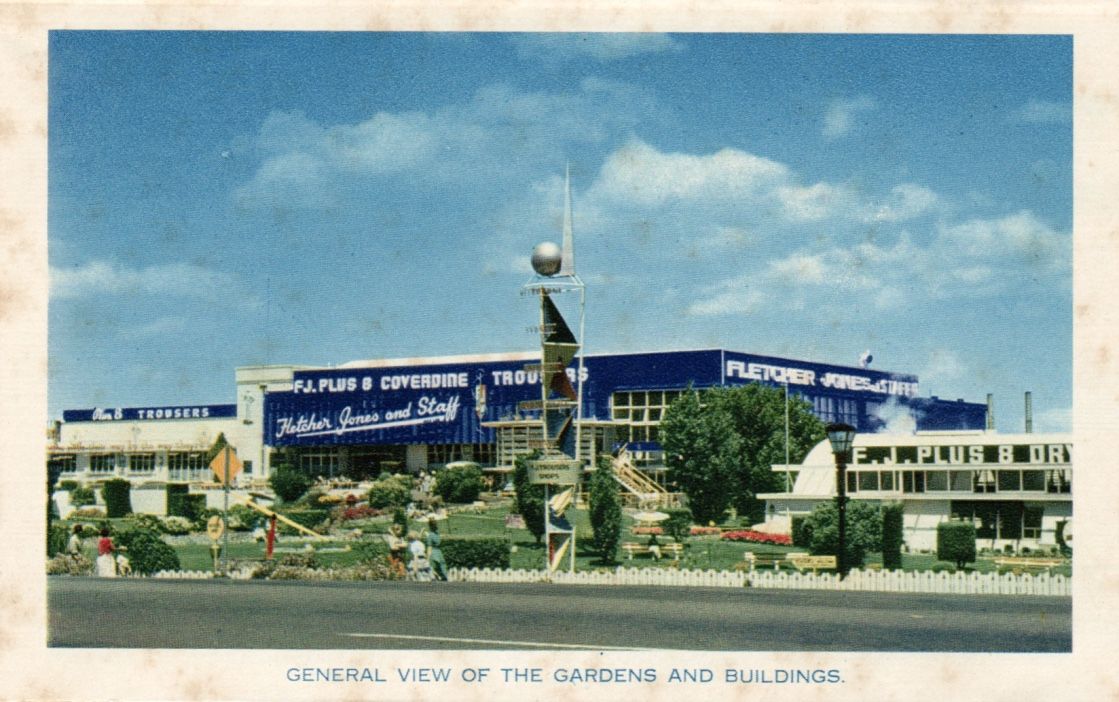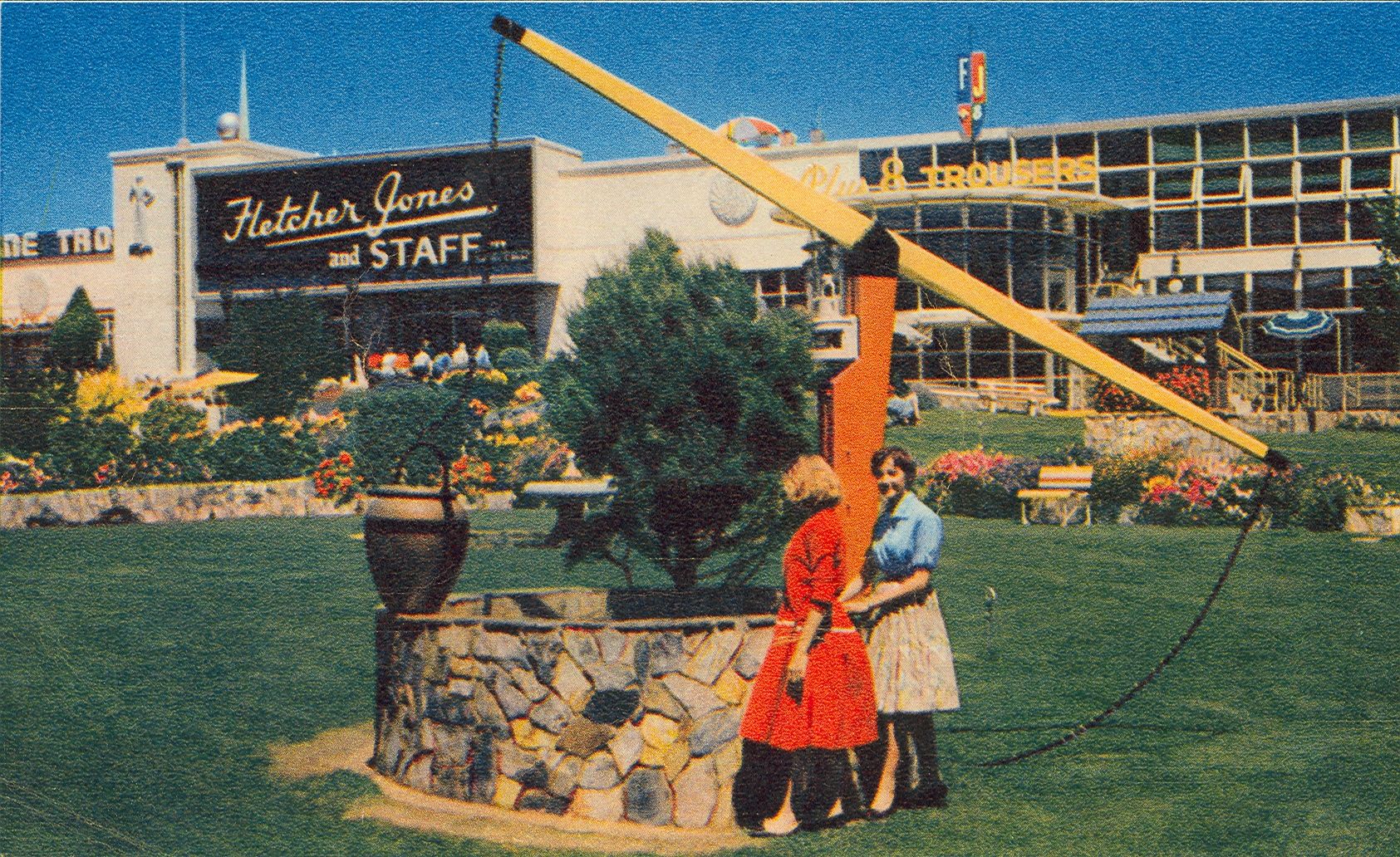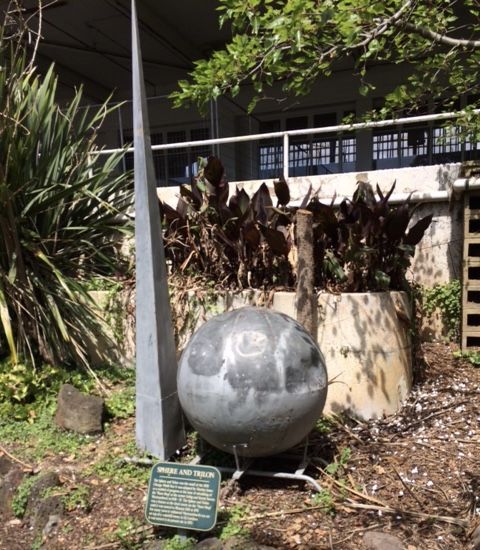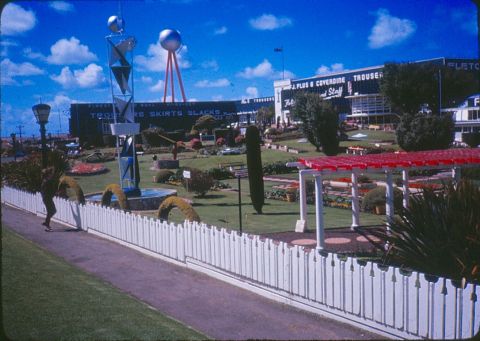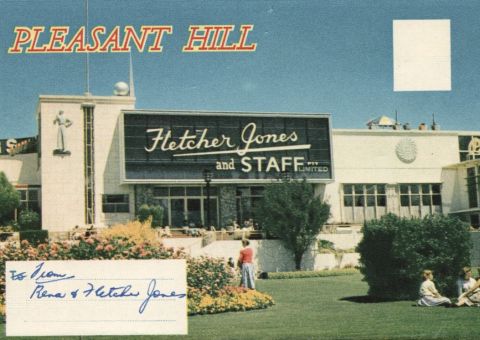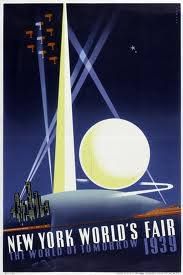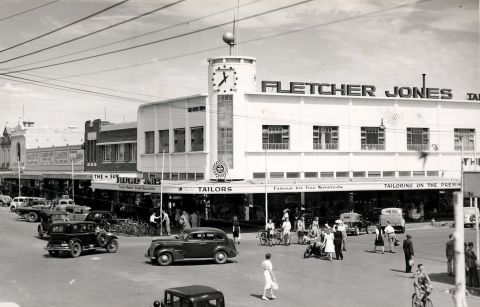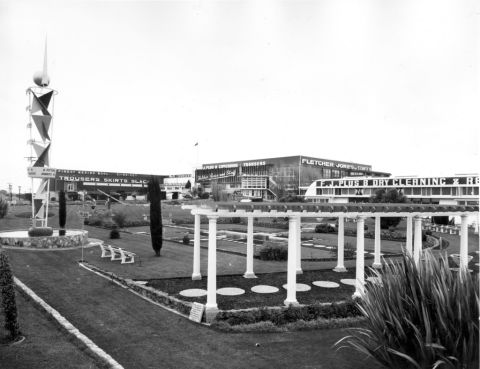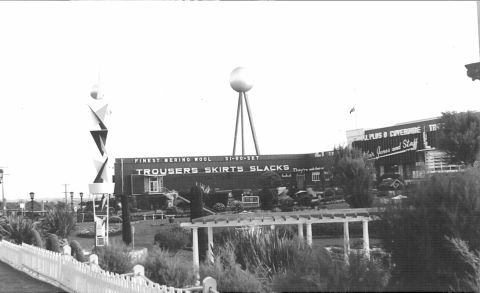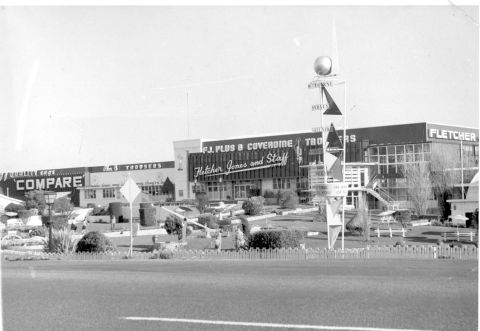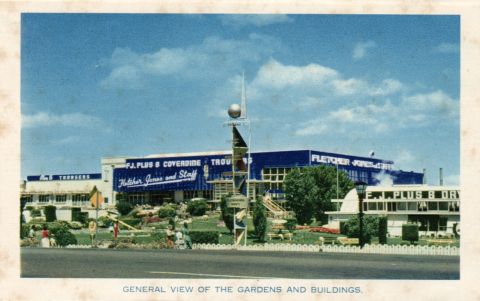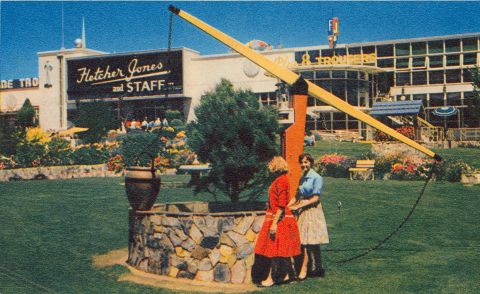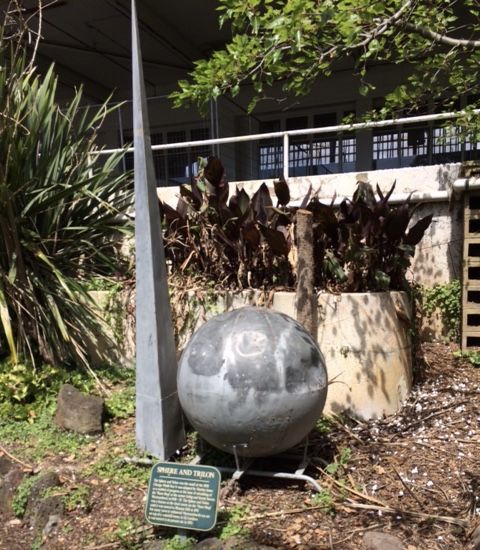The small cone and sphere metal sculpture in the Fletcher Jones gardens now sitting rather forlornly in a garden bed once sat atop the Man's Shop in Liebig St. before moving to the top of the Pleasant Hill factory building and later to a small tower in the gardens. Towering above the small sculpture is another metal cone and sphere formation - Warrnambool's famous Silver Ball. So why was this cone and sphere formation so important to Fletcher?
Fletcher was inspired by the 1939 New York World Fair and adopted its famous symbol of progress, the Trylon and Persiphere, an enormous sculpture celebrating the theme of 'The World of Tomorrow'.
The Perisphere was approximately 60m in diameter, and was accessible to hundreds of thousands of visitors who entered via the Trylon. Inside the tremendous sphere was a viewing platform, looking down on ‘Democracity’, an architectural model of a future city designed for a population of over a million people.
Democracity was a utopian futurist vision, where town planning compartmentalised the functions of society into districts. They included; Centerton, where business and education were conducted; Pleasantville, satellite towns of about 10,000 residents each; Millville, satellite industrial centres; and The Farms. It's not at all a stretch to imagine that Fletcher's garden, 'Pleasant Hill', was a play on 'Pleasantville'.
Democracity has inspired many city layouts around the world; it was similar in appearance to Canberra, with abundant parklands and circular districts linked by sprawling highways.
More information can be found at the link below and you can see the Perisphere and the Trylon in the New York World Fair video below.
Reference to FJ and the Trylon & Perisphere is also found on page 173 of 'The Garden of Ideas; Four Centuries of Australian Style', by Richard Aitken, and of course in FJ's book, 'Not by Myself'. The Trylon and Perisphere are also regularly referenced in pop culture, such as 'The Simpsons', 'Homeland', and the George Clooney film 'Tomorrowland'.
Thanks to Gareth Colliton for this story.
